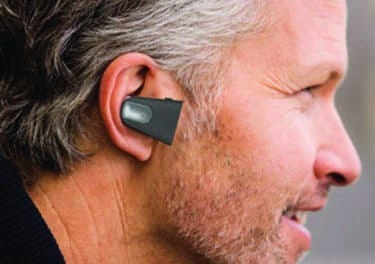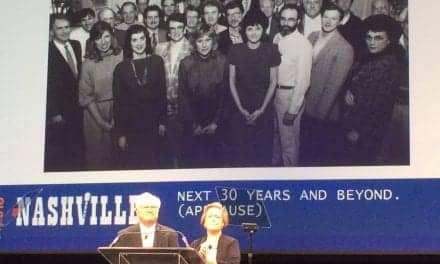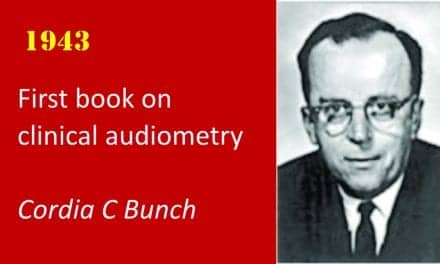For the past 10 years, digital noise reduction (DNR) has been a prominent feature of digital hearing aids. Most DNR algorithms, especially the earlier versions, have been modulation-based. These systems are most effective in differentiating speech from broadband stationary noise when noise is detected as a primary (or dominant) signal within a given channel. In these cases, gain reduction within that channel occurs.1 The primary patient benefit is to make listening in noise more relaxing and less annoying, with the indirect benefit that a relaxed listener will have improved communication strategies, leading to improved speech intelligibility.
As reported by Chalupper and Powers,2 a second type of DNR algorithm, based on the Wiener Filter3 (also referred to as “spectral subtraction”), has been implemented in some hearing instruments.4 This fast-acting noise reduction filter complements the modulation-based algorithm and provides further reduction of stationary broadband noise. As it is fast-acting, it is effective in reducing unwanted noise during gaps in speech and has the potential to improve the overall signal-to-noise ratio (SNR). While modulation-based DNR algorithms are typically most effective when noise is the dominant signal (ie, SNR is negative), this type of filtering usually provides the most patient benefit when the SNR is positive (eg, +2 to +5 dB SNR).
Transient Noise-Reduction Algorithms
Although these two types of DNR have proven to be effective, there are “noise situations” where a third type of DNR is needed. This is when there are abrupt or transient noises (eg, dishes clattering) that are annoying to the hearing aid user. This requires a fast-acting DNR algorithm that analyzes both the spectral and temporal characteristics of the input signal.
To combat the annoyance of transient sounds, in April 2006 Siemens introduced a new DNR algorithm referred to as SoundSmoothing, the first such algorithm designed for this purpose in the hearing aid market. This system uses spectro-temporal analysis to identify transient non-speech signals. SoundSmoothing is designed to reduce these impulse signals without impacting the speech signal (see Chalupper and Powers2).
Since the introduction of this new DNR system, considerable research has been conducted to test its efficacy and effectiveness. In general, this research has shown that it accomplishes the desired goals of reducing the annoyance of transient noises, without any negative consequences for speech intelligibility or sound quality.2,5
Recently, two other manufacturers have introduced DNR systems which also have been reported to address transient noises. It was of interest, therefore, to compare these new transient noise reduction (TNR) algorithms with SoundSmoothing to determine if processing differences exist. If substantial differences in technical measurements exist, the perceptual benefits proven with SoundSmoothing are not necessarily valid for competitive systems.
Methods
Prior to comparison with SoundSmoothing, the competitive systems were compared with one another. These pilot measurements indicated that these two TNR algorithms are essentially identical. Therefore, SoundSmoothing was only compared in detail to one TNR algorithm.
The hearing aid models used for comparison were the Siemens CENTRA Life and a comparable competitive high-end hearing system. The selected styles were open-canal BTE hearing instruments utilizing thin tubing and closed tips. The closed tips were further sealed for a closed fitting to provide consistent results.
The instruments were each fitted to the same moderate sloping hearing loss using manufacturers’ default settings. The CENTRA Life was programmed to the Siemens OPEN. The SoundSmoothing and competitive TNR algorithms were confirmed as “on” in all programs. Classification systems and conventional noise reduction were active in both instruments. To rule out effects due to differences in the frequency response, CENTRA Life was adjusted to match the frequency response of the competitive model for running speech with a level of 65 dB SPL; compression settings were not modified.
Test stimuli for evaluation consisted of various real-life sounds (eg, hammering, clattering dishes), as well as synthetic sounds, which provided added control over the input signal. Signals were presented at different input levels and durations. The hearing aids were fitted to the KEMAR, and recordings of the different signals were made.
Three different criteria were used for evaluating the two different DNR algorithms: 1) degree of attenuation for the transient signals in both quiet and in dynamic background noise; 2) accuracy of the systems in detecting transient sounds; and 3) dynamic behavior of the systems in regard to fixed and adaptive time constants.
Results
Measures of transient attenuation. For the calculation of transient attenuation, the signal was divided into 1-second segments. Within each segment, the maximum amplitude was extracted for “Off” and the three “On” conditions (Minimum-Medium-Maximum) for each hearing instrument. The ratio between the “Off” setting and each of these three “On” positions was calculated (in dB) for each of these segments. Finally, the mean across all segments was computed to calculate the overall transient attenuation (Figure 1).

|
| FIGURE 1. Method to calculate transient attenuation. Click on image for larger version |
For the attenuation of a transient signal to be effective, the transient attenuation must be larger than the decrease in RMS. Ideally, the transient peaks would be affected and their amplitude reduced, while the overall signal would remain relatively constant. As shown in Figure 2, the degree of attenuation increases for both algorithms as the strength of the algorithm moves from minimum to maximum. SoundSmoothing reduces transient sounds by 20 dB on average. For the same input signal, the attenuation implemented by the competitive TNR is approximately 5 dB. The separation between transient peaks and the overall RMS remains less than 5 dB with this TNR, but reaches up to a 15 dB separation with SoundSmoothing. Figures 3 and 4 show SoundSmoothing and the competitive TNR system reacting to other sound samples. A similar pattern is observed as shown in Figure 2.

|
| FIGURE 2. Performance of Soundsmoothing and competitive system for sound sample #1 (clinking glass, rustling paper, and hand clapping). Click on image for larger version |

|
| FIGURE 3. Performance of Soundsmoothing and competitive system for sound sample #2 (clattering dishes). Click on image for larger version |

|
| FIGURE 4. Performance of Soundsmoothing and competitive system for sound sample #3 (clattering dishes). Click on image for larger version |
Additional measurements regarding magnitude of the attenuation related to how the algorithm performed in dynamic and noisy situations. It’s possible that background noise could limit the effectiveness of the attenuation shown in quiet conditions. This is important because, in many listening situations, there is background noise present when the transient noise occurs. Figure 5 demonstrates the performance of SoundSmoothing and the competitive TNR system in the presence of background noise. As shown in the figure, SoundSmoothing is effective at reducing the peaks of the transient signals, whereas it appears that the TNR algorithm is unable to detect and reduce the transient signals amid the background noise.
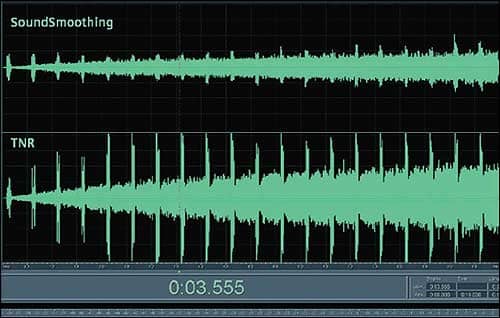
|
| FIGURE 5. Attenuation in background noise. The top graph shows results with SoundSmoothing, and the bottom graph shows results with the competitive TNR. |
Detection accuracy. As indicated, another important aspect of a transient noise reduction system is its reliability. That is, the system must accurately detect transient signals. Figures 6 and 7 show comparisons between the “On” and “Off” conditions for SoundSmoothing and the competitive TNR, respectively. A clear indication that the system is reliably detecting the transient signal is the reduction of the transient peak in the “On” condition. This difference is easily noticeable for the SoundSmoothing system, but it is not readily apparent with the other TNR system.
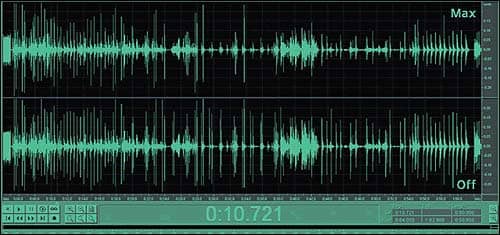
|
| FIGURE 6. Reliability of transient detection with the competitive TNR system. The top graph shows results with TNR at maximum, and the bottom graph shows results with TNR off. |
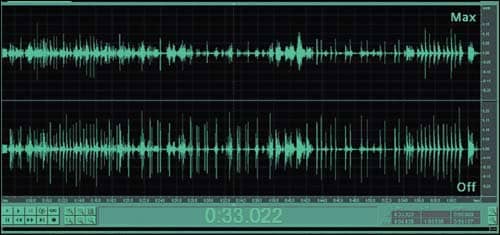
|
| FIGURE 7. Reliability of transient detection with SoundSmoothing. The top graph shows results with SoundSmoothing at maximum, and the bottom graph shows results with SoundSmoothing off. |
Dynamic behavior. The final comparison of these two DNR systems was to evaluate the presence of artifacts. This is related to the dynamic behavior of the system and indicates how the system manages the transient signal after identifying and reducing the signal.
The two systems differ somewhat in their time constants. SoundSmoothing uses an adaptive release time between 10 ms and 150 ms, attempting to adapt to the pulses of various durations. The competitive TNR system uses a fixed release of 60 ms in the default setting.
Transient signals are short in duration; however, that length of time can still fluctuate between different signals. The theoretical advantage of using adaptive release times is that, for signals with very short durations, the reduction system attacks and releases quickly, preventing a decrease in gain with the absence of the transient signal. If the release time is too long and a dip occurs in the presence of running speech, there is a risk of degrading speech intelligibility.
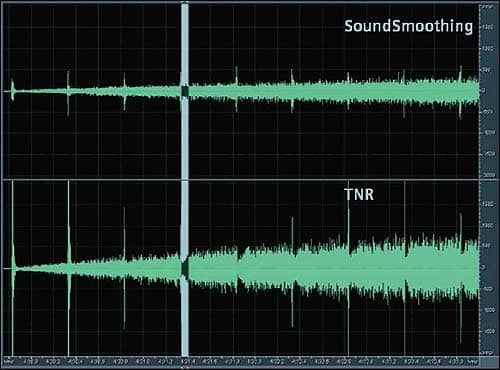
|
| FIGURE 8. Dynamic behavior for short pulses, with SoundSmoothing shown on the top and the competitive TNR system on the bottom. |
Figure 8 shows that, with a fixed release, there is still a reduction in gain after the transient signal has stopped. Additionally, some signals are of a longer duration (~100 ms) but must still be considered transient. Appropriate reduction of annoyance from such sounds requires dampening the entire signal. Communication and comfort are both compromised if the signal is not reduced for the entire length of its duration. This is demonstrated in Figure 9 where the fixed release is too short to address the longer pulse.
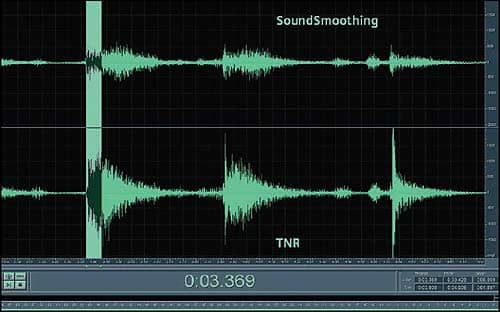
|
| FIGURE 9. Dynamic behavior for long pulses. |
Summary
A transient noise reduction system needs to perform effectively in quiet and in background noise, reliably in the detection of transient sounds, and without artifacts related to dynamic behavior. This article compares two different DNR algorithms, both available in today’s hearing aids and both designed to reduce transient noise signals.
Although the two types of TNR discussed at the beginning of this article are able to attenuate transient noises, there are areas where significant differences between TNR systems can be noted. In general, our testing reveals that, in both quiet and noise conditions, the SoundSmoothing algorithm more effectively attenuates transient noise signals compared to the competitive TNR system. For transient detection, the testing suggests that SoundSmoothing was more reliable in identifying, and subsequently reducing, the amplitude of transient signals. Finally, in regard to artifacts, the testing indicates that the fixed time constant of the competitive TNR may limit its effectiveness when arbitrary pulse durations are present.
The next step is to determine how the processing differences of the algorithms demonstrated here affect patient benefit in the real world. Since there appear to be clear technical differences between the algorithms under investigation, it is obvious that the perceptual benefits proven with SoundSmoothing are not necessarily valid, nor can they be applied “across the board,” for the competitive systems.
References
- Mueller HG, Ricketts T. Digital noise reduction. Hear Jour. 2005;58(1):10-17.
- Chalupper J, Powers TA. New algorithm is designed to take the annoyance out of noise. Hear Jour. 2007;60(4):42-48.
- Wiener N. Cybernetics. Cambridge, Mass: MIT Press; 1948.
- Hamacher V, Chalupper J, Eggers J, et al. Signal processing in high-end hearing aids: state of the art, challenges, and future trends. J Applied Signal Processing. 2005;18:2915–2929.
- Keidser G, O’Brien A, Latzel M, Convery E. Evaluation of a noise reduction algorithm that targets non-speech transient sounds. Hear Jour. 2007;60(2):29-39.
This article was submitted to HR by Josef Chalupper, PhD, director of audiology, and Eric Branda, AuD, field trial and training coordinator, at Siemens Audiologische Technik, GmbH, Erlangen, Germany. Correspondence can be addressed to HR at [email protected] or Josef Chalupper, PhD, Siemens Audiologische Technik GmbH, Gebbertstr 125, D-91058 Erlangen, Germany; e-mail: .



